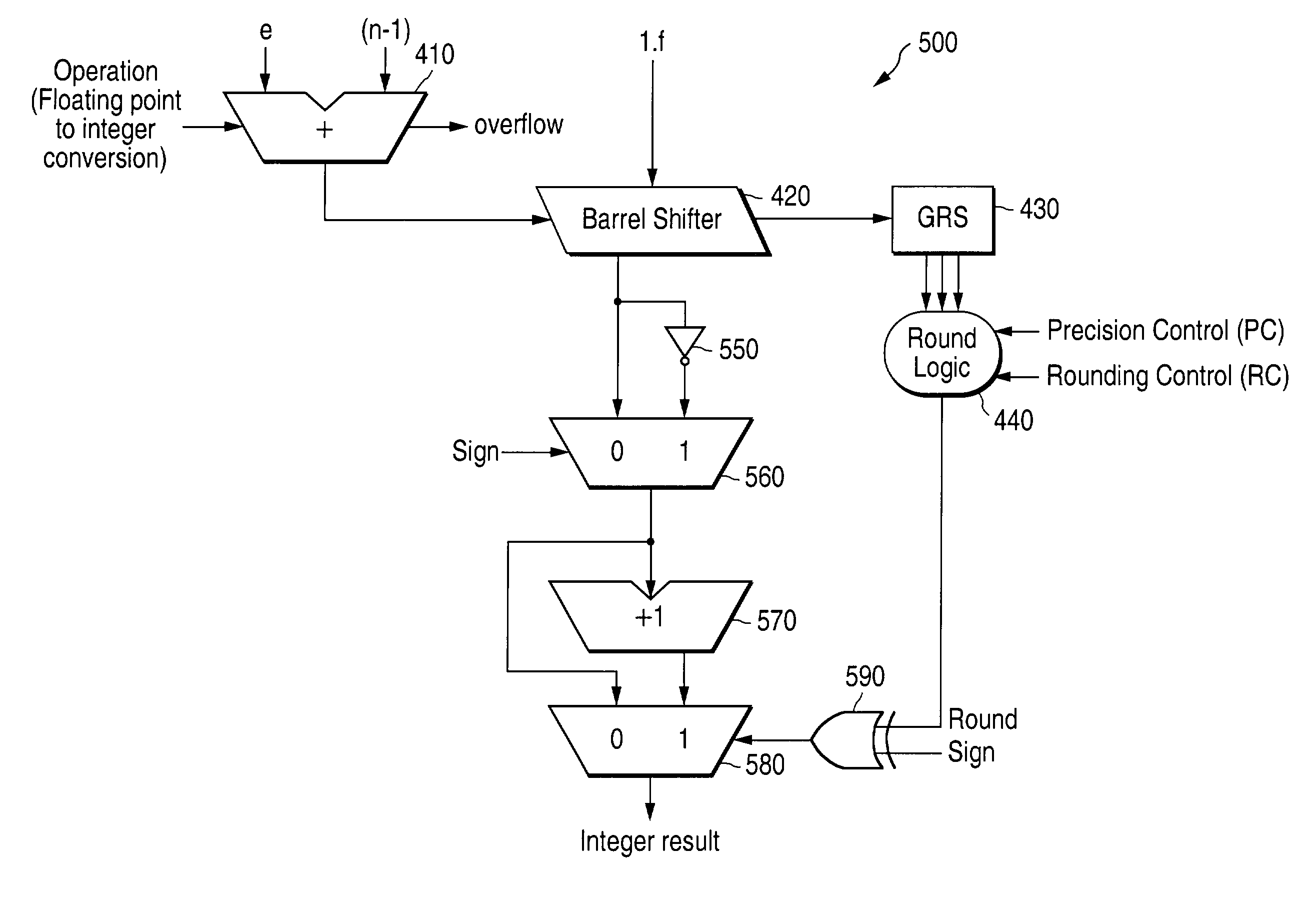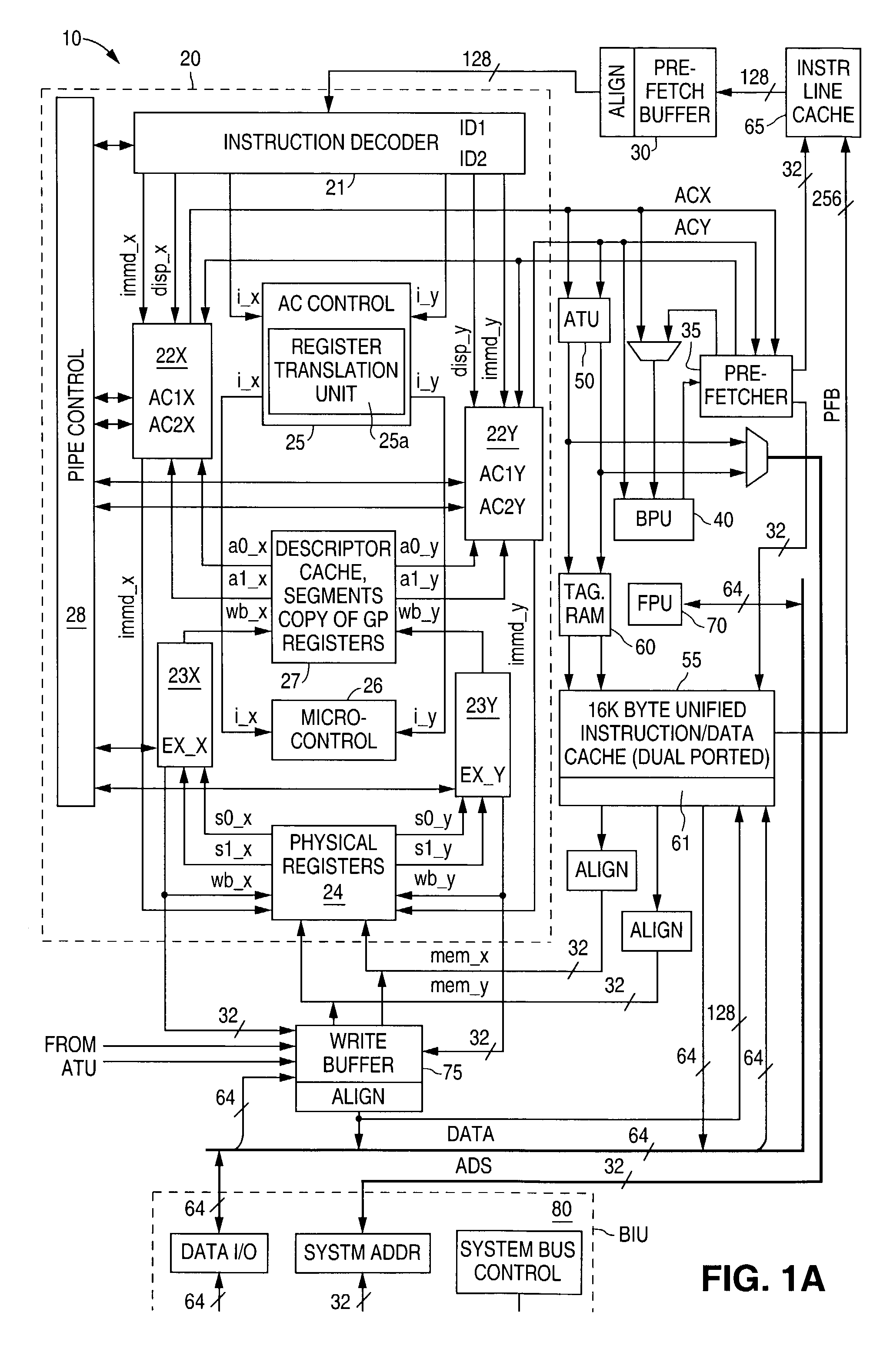Converting negative floating point numbers to integer notation without two's complement hardware
a technology of integer notation and negative floating point numbers, applied in the field of microprocessors, can solve the problems of increasing power consumption and temperature of the processor, damage to the processor, and increased power consumption, and achieve the effect of faster conversion
- Summary
- Abstract
- Description
- Claims
- Application Information
AI Technical Summary
Problems solved by technology
Method used
Image
Examples
Embodiment Construction
[0029]Referring initially to FIG. 1a, illustrated is a block diagram of an exemplary superscalar and superpipelined processor 10 in accordance with the principles of the present invention. Exemplary processor 10 includes a processor core 20, a prefetch buffer 30, a prefetcher 35, a branch processing unit (“BPU”) 40, an address translation unit (“ATU”) 50, a unified cache 55, TAG random access memory (“TAG RAM”) 60, an instruction line cache 65, an onboard floating point unit (“FPU”) 70, a plurality of write buffers 75 (one shown), and a bus interface unit (“BIU”) 80. Each of the above-identified components is conventional, i.e., their functionality is known. The functionality associated with the interrelationship of various ones of the components is also known. Exemplary processors implementing the foregoing are the 6×86 and MII processors available from Cyrix Corporation of Richardson, Tex.
[0030]In an exemplary embodiment, instruction line cache 65 and unified cache 55 operate as p...
PUM
 Login to View More
Login to View More Abstract
Description
Claims
Application Information
 Login to View More
Login to View More - R&D
- Intellectual Property
- Life Sciences
- Materials
- Tech Scout
- Unparalleled Data Quality
- Higher Quality Content
- 60% Fewer Hallucinations
Browse by: Latest US Patents, China's latest patents, Technical Efficacy Thesaurus, Application Domain, Technology Topic, Popular Technical Reports.
© 2025 PatSnap. All rights reserved.Legal|Privacy policy|Modern Slavery Act Transparency Statement|Sitemap|About US| Contact US: help@patsnap.com



